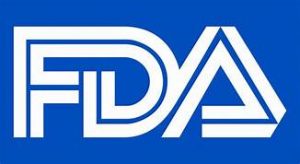The Food and Drug Administration (FDA), an agency within the US Department of Health and Human Services, is advising that certain yellowfin or ahi tuna products supplied by Truong Phu Xanh Co. of Vietnam be discarded or destroyed, and advising consumers not eat the fish. This follows a traceback investigation of recent cases of Scombrotoxin fish poisoning.
Additionally, the Silver Spring, Maryland-headquartered agency has placed the company on Import Alert, which enables the FDA’s field staff to detain suspect yellowfin tuna without physical examination from entering US borders. Detained product will not clear customs unless the importer proves that it meets US food safety standards.
“We have asked for a recall, but the company to date has not taken that action, so we are issuing this public warning,” said FDA Deputy Commissioner for Food Policy and Response Frank Yiannas. “Previous voluntary recalls of this tuna product by certain sectors of the supply chain that were initiated early on in our investigation removed some affected product from the market. However, after further traceback we identified Truong Phu Xanh Co. as the common supplier of yellowfin tuna that was likely consumed by most of the ill people. We became concerned that additional product that could cause illness may be available to consumers and is why we are issuing this warning and Import Alert.”

Consumers, importers, suppliers, distributors, retailers and restaurants are being warned to immediately discard tuna from this supplier with production dates from January 2019 to the present. To date, this investigation includes 47 illnesses of Scombrotoxin fish poisoning linked to yellowfin tuna. The last known illness traced to the product occurred on October 15.
Throughout the investigation, the FDA and states have been collecting product samples for testing. When Scombrotoxin fish poisoning occurs, product samples cannot be linked to case patient samples through Whole Genome Sequencing (WGS) or Pulsed-Field Gel Electrophoresis (PFGE) analysis as is the case with other foodborne illnesses, e.g., Salmonella or Listeria. Instead, samples are tested for decomposition and/or histamine levels. Multiple samples have been collected and analyzed, with positive results for decomposition or high histamine levels in products imported from the Vietnamese supplier. The FDA and state partners also collected epidemiologic and traceback information for reported illnesses.
Scombrotoxin fish poisoning occurs when fish is not properly chilled or preserved and begins to spoil, resulting in increased histamine levels. Histamine cannot be destroyed by freezing or cooking. Symptoms typically develop within a few minutes to an hour after eating mishandled and decomposed fish. They usually resemble an allergic reaction and can include flushing of the face, headache, heart palpitations, itching, blurred vision, cramps, and diarrhea. Symptoms can be treated with antihistamines, but even without treatment, people usually get better within 12 hours.






